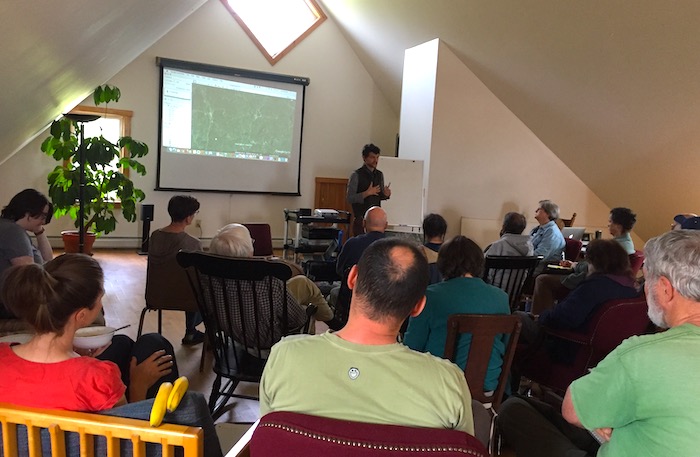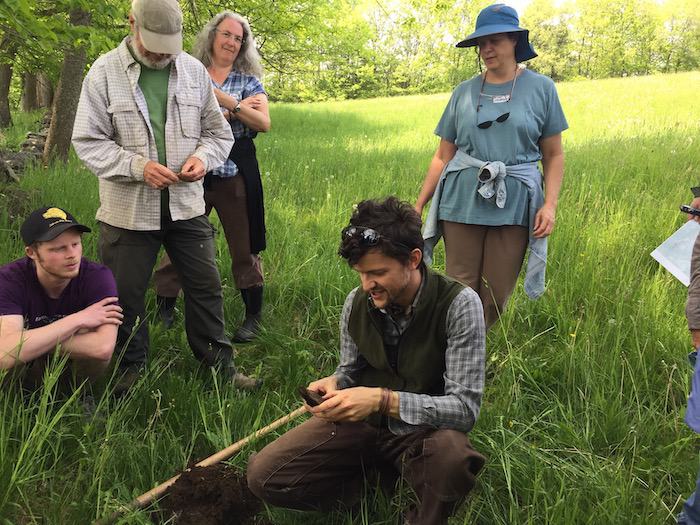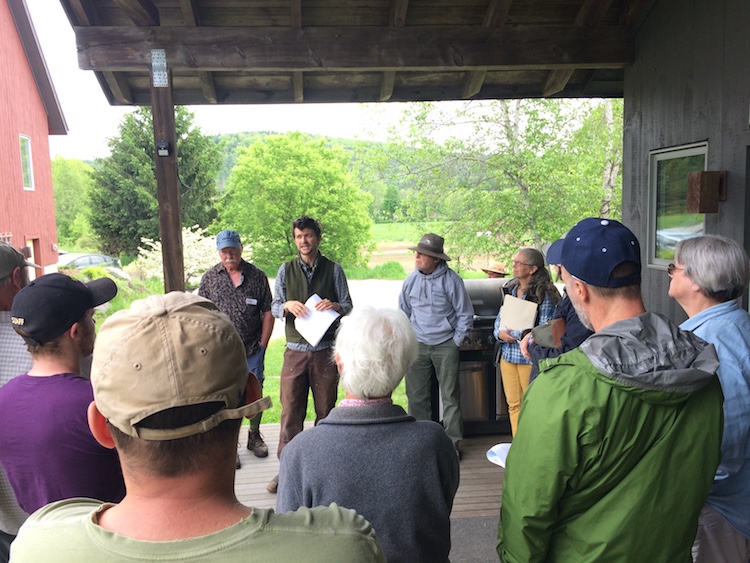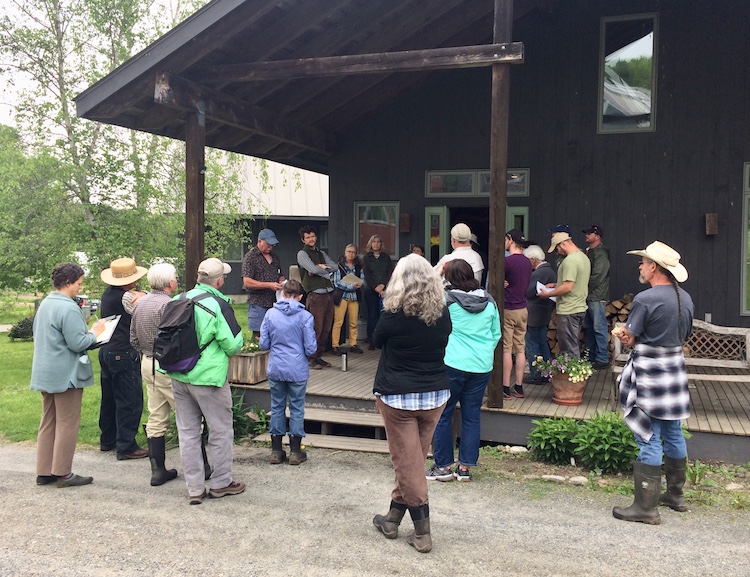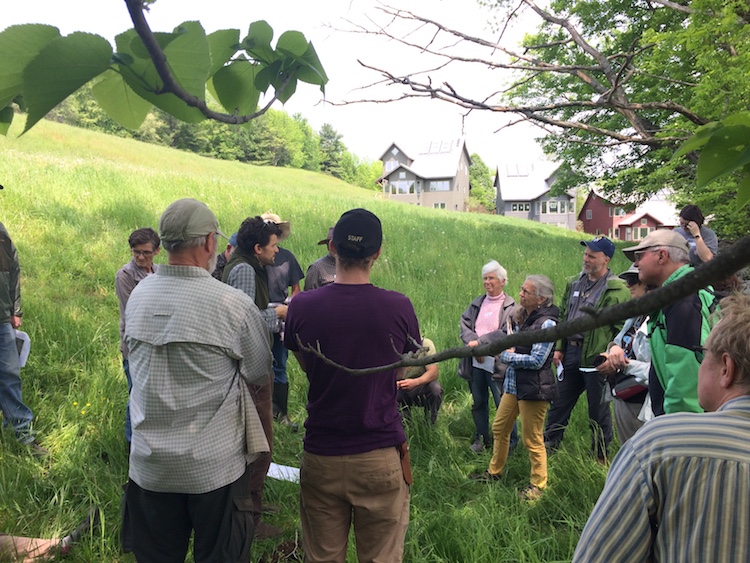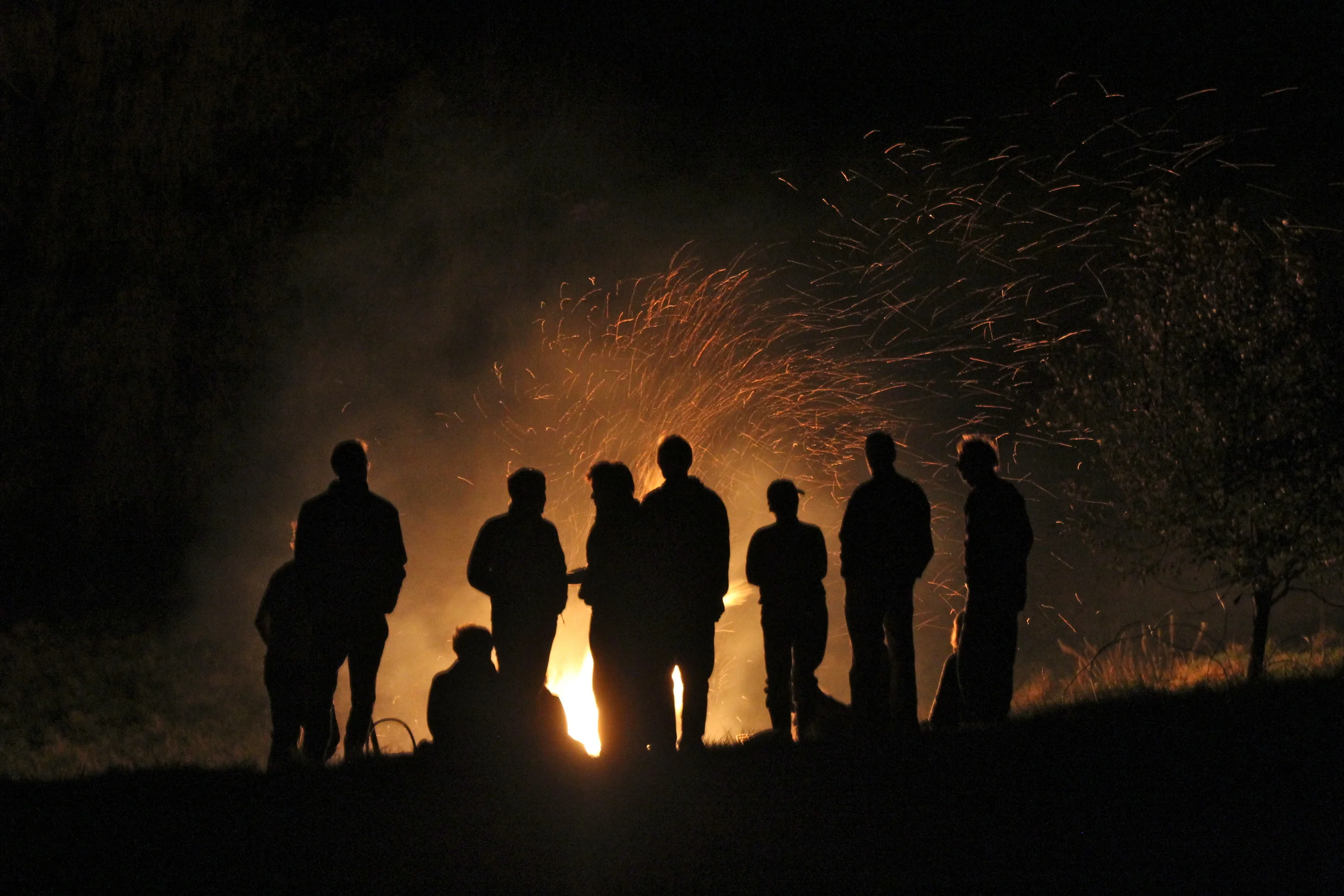Reading the Ecological Landscape
/Contributed by Helen, Tad, Sandy, Zea
“I loved the connection he made between the history of the people and animals who lived in Vermont and the history and development of the land itself.”
On June 1st, we welcomed Connor Stedman to our land to lead a workshop. Connor is a planner and agro-ecological designer with AppleSeed Permaculture LLC, a writer and organizer with the Greenhorns and Agrarian Trust, and an educator around North America. His work bridges regenerative agriculture, deep nature connection, stories of place, and socially engaged ecological design. As an educator, Connor serves as lead faculty for the Omega Institute’s Ecological Literacy Immersion Program and a lead facilitator for Art of Mentoring trainings around the US. He holds an M.S. in Ecological Planning from UVM and lives in the Hudson River Valley of New York.
This workshop came about thanks to a new permaculture committee that's formed at Cobb Hill. The hope is that this is the first in a long series.
The morning dovetailed with a talk Friday with Connor, sponsored by a number of local groups and Resilient Hartford, called "Thinking Like a Watershed" - on watershed-scale resilience in the face of climate change.
Many topics were touched on and we all walked away with various take-aways. These are not simple concepts and indeed this metaphor was made: trying to do ecological design on a piece of land like Cobb Hill is like taking one's kidney out of one's body, putting it on a table, and looking at it. Connor share a range of historical facts and stories to give background, like the Doctrine of Discovery leading to private land ownership, the history of beavers in our area and how they shaped the landscape, rattle snake eradication and how that has affected tick populations today, and how soil surveys came about and what they tell us.
We did discuss some site-specific ideas and problems. Water flow and drainage are issues in some places on our property - we went out and looked at some spots and the current mitigation techniques. We touched on some pest control options, like humming birds as deterrent to berry poaching birds and planting flowering strips in orchard rows to encourage biological control of orchard pests. Lastly, there was some interest in agro-forestry beyond the mushrooms we are already cultivating.
“I took away a much deeper understanding of the historical background of Vermont's geology and socio/cultural pressures that shaped our land use as we see it today. I also am excited about maximizing biodiversity here using hedgerows, owl/kestrel boxes, landrace seeds, and a swale garden and other water retention methods to slow and filter water around our property.”
